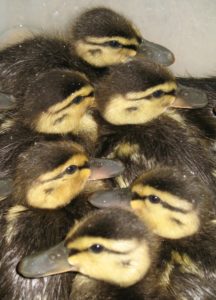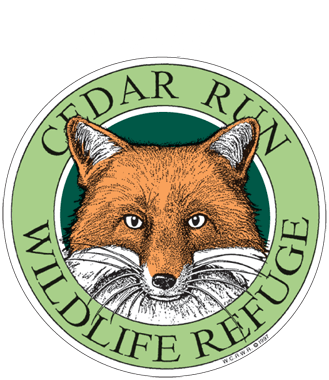Oh, no! There’s a baby bird that needs help! Now what?? Wildlife have the best chance of survival with a licensed wildlife rehabilitator, so do your best to get them to one as soon as possible!
It is not an uncommon occurrence for people in NJ to find injured, sick, and orphaned wildlife, and it’s very important for them to bring animals, especially birds, to a licensed wildlife rehabilitator like Cedar Run Wildlife Refuge. Not only is it illegal to rehabilitate or keep an animal without the appropriate permitting through the State of New Jersey, but it’s also putting those animals at risk of becoming too familiar with people and missing out on crucial learning opportunities for natural instinctual behaviors and without those skills, they would be unsuccessful in the wild.
For mammals, we call this process “habituation”, and this can sometimes be reversed by housing the animal with conspecifics that are exhibiting appropriate behaviors and posturing so that the human raised animal can learn these important skills, however it’s not always fruitful.

Ducklings are especially susceptible to human imprinting – our rehabilitators take very careful measures when they’re in our care to ensure they grow up with wild instincts necessary for survival in the wild after they’re released.
For birds, though, this time period when they are young is called “imprinting”, in which they establish what they belong with by what’s taking care of them. Regardless if a bird imprints appropriately on conspecifics (animals of the same species) or on humans, the process is irreversible because it actually promotes a physical change in their brain structure, and therefore cannot be undone no matter what method is attempted.
Now, that may sound friendly and nice, but in reality, for wild animals what they belong with is what they look to as equals to compete with for food, space, resources, and breeding. This guarantees that the human imprinted bird will never be able to be wild because of lack of appreciation for their conspecifics, as well as not recognize predators, and be a threat to humans, as well. Wild animals need to be able to recognize people as potential threats to keep them safe, as well as to keep people safe. As you can imagine, it would be compromising for wildlife to not fear humans.
Licensed wildlife rehabilitators are able to avoid imprinting baby birds with various techniques, with an overall common theme of limiting their visual connection with people.
Imprinting is a process still studied by scientists, and is quite an illusive topic. What we do know, however, is that different bird species have different imprinting windows, times at which baby birds are susceptible to the process of imprinting. Although in general, we know that once the process is completed, it is permanent. We also know that imprinting is a visual association process. For this reason, it is crucial to the survival of the bird that people are able to put the animal under a licensed wildlife rehabilitator’s care as soon as possible after collection.
Licensed wildlife rehabilitators receive a state permit by taking special classes and courses to learn how best to feed, raise, and interact with wild animals so that they are able to build crucial skills to be successful in the wild.
Release is always the number one goal of wildlife rehabilitators, and so they will always do everything in their power to achieve this.
Here, at Cedar Run, we see thousands of babies every year, during what we call “Baby Season”. Our staff and volunteers work tirelessly, often from sunrise to sunset, to give those animals their best chance of survival.
–Lauren Edzenga, Environmental Educator

